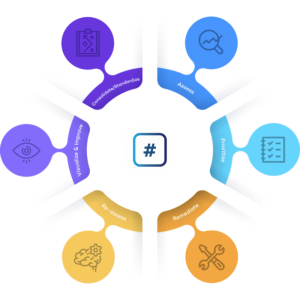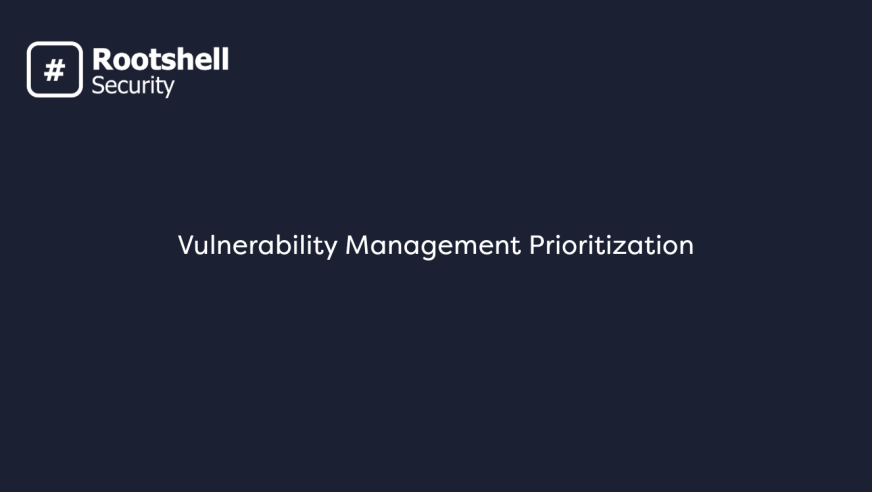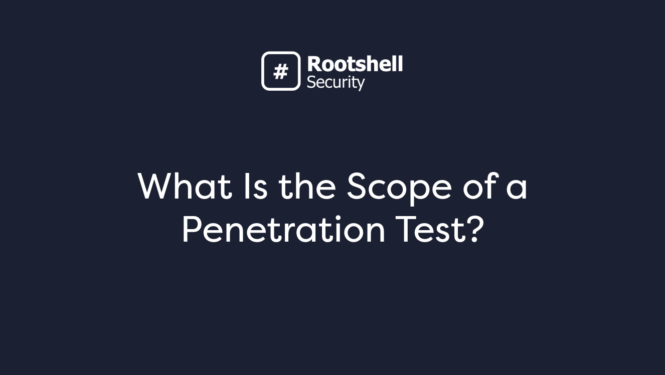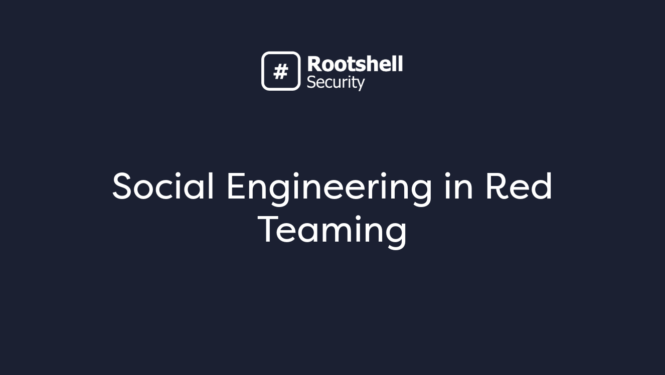In a cyber landscape teeming with threats, it’s impractical for teams to address every single vulnerability. The solution lies in vulnerability management prioritization, the process by which identified vulnerabilities are ranked based on risk. It’s a cornerstone in ensuring robust risk management.
In this article, we discuss the best approaches to vulnerability management prioritization and the key factors you’ll need to consider when implementing it.
What is Vulnerability Prioritization?
Vulnerability prioritization is the process of categorizing vulnerabilities based on the level of threat they pose to your organization. This enables your security team to focus on remediating the most pressing issues first. As a result, you’ll benefit from a more robust security posture while optimizing resource allocation and making more efficient use of your security budget.
Vulnerability prioritization is an integral phase of the vulnerability management lifecycle, as shown below. Once data from a vulnerability assessment is in hand, security teams must categorize the identified vulnerabilities based on factors like potential impact and exploitability.

This prioritization strategy then guides the remediation process. By emphasizing vulnerability prioritization, teams ensure they don’t expend resources on non-critical issues while neglecting severe security risks. Effective vulnerability prioritization incorporates an understanding of the risk landscape, accounting for compliance requirements, business context, and potential breach scenarios.
Why is Vulnerability Prioritization Important?
With countless security issues emerging every day, deciding which ones require urgent attention becomes a monumental task. In reality, not all issues demand instant remediation. Without a clear distinction, teams can waste invaluable resources on minor threats while leaving significant gaps exposed. This is where vulnerability prioritization becomes crucial.
By implementing a systematic approach, teams can focus on critical vulnerabilities – the ones that, if left unchecked, have the potential to inflict considerable damage. These are vulnerabilities that stand out not just for their technical implications but for the real risk they present to business operations and sensitive data. Recognizing and acting on these threats promptly is pivotal for maintaining a resilient security posture.
A robust vulnerability prioritization strategy offers clarity, directing teams on where to channel their remediation efforts for maximum impact. This systematic approach ensures that organizations are not just reacting to threats but are proactively safeguarding their assets and reputation.
Factors to Consider in Prioritizing Vulnerabilities
Severity. This reflects the potential impact on the target system if a vulnerability were successfully exploited. For instance, could the vulnerability lead to a prolonged outage or the exposure of sensitive data? Severity is usually expressed in terms of a CVSS score.
Exploitability. This assesses how difficult it would be to successfully exploit a vulnerability. Would a threat actor require advanced technical knowledge or specific user privileges to mount a successful attack?
Asset criticality. This considers how important the affected asset is to your business. A vulnerability that could affect critical infrastructure for a prolonged period will require more urgent attention than one that would only impact a specific internal tool.
Dependencies. A vulnerability in a given asset might have further consequences for other systems – for instance, if an exploit allows attackers to move from their initial point of entry into other parts of your network.
Business impact. Ultimately, vulnerability prioritization must focus on minimizing potential damage to your business. That means considering the financial and legal consequences of a breach and the ongoing impact on your reputation.
Challenges of Vulnerability Prioritization
- The volume of vulnerabilities. For most organizations, vulnerability scans will identify significantly more issues than can realistically be remediated, making prioritization essential. If you rely on manual processes or lack an efficient system for categorizing vulnerabilities, the sheer volume may cause bottlenecks.
- Lack of asset visibility. Without a clear picture of your full attack surface, it can be difficult to correctly evaluate a particular issue. You may inaccurately assess a vulnerability as low-priority simply because you are unaware of how it fits into your wider systems architecture or affects critical business functions.
- Siloed teams. Accurate risk assessment is a collaborative effort. If your teams can’t share knowledge effectively, you may fail to fully appreciate the potential business impact of a given vulnerability. As a result, you may underestimate the risk it poses.
- Limitations of CVSS scores. Despite being an industry benchmark, CVSS scores are not without their issues. The scores, ranging from 0 to 10, were designed to convey the severity of a particular vulnerability. However, they may not always reflect the business impact or real risk a vulnerability poses, especially if the severity of the vulnerability is assessed without a full understanding of the risk landscape.
How to Prioritize Vulnerability Remediation
Map Your Attack Surface
To analyze and categorize vulnerabilities correctly, you need a holistic picture of your attack surface. Without a clear sense of how critical systems interact and the attack paths available to threat actors, you may underestimate serious threats – until it’s too late.
A comprehensive attack surface management solution will ensure you have an accurate and up-to-date picture of your cyber assets, uncovering shadow IT and highlighting entry points that could otherwise be missed.
Automate Your Processes
Vulnerability prioritization is about ensuring your teams can tackle the most significant threats without delay. But if you’re overreliant on manual processes, you’ll still struggle to keep pace with emerging issues. The prioritization process itself could end up as just another burden on your limited resources – as well as introducing the risk of human error.
Instead, implement automation tools for key steps in the process. Automated vulnerability management solutions can significantly accelerate your ability to identify, evaluate and remediate vulnerabilities. As a result, you’ll be able to prioritize vulnerabilities more efficiently and with greater accuracy, while remediations can be actioned without delay.
Implement Continuous Vulnerability Monitoring
Ultimately, you can’t prioritize vulnerabilities that you don’t know about. If you only perform vulnerability scans at set intervals, the time between scans might leave you exposed. New threats can emerge without warning, but you won’t find out about them until your next scan – and in the meantime, you’ll be focused on remediating vulnerabilities that are less significant.
Instead, adopt a continuous approach to vulnerability management. With real-time vulnerability data to work with, your prioritization efforts will be more accurate and less likely to overlook critical issues.
Incorporate threat intelligence
The threat a vulnerability poses to your organization isn’t just about its potential impact on your systems. You also need to consider how likely it is that an attacker will exploit it. While this partly depends on the technical knowledge it requires or the level of access needed, it also relies on the real-world activities of actual threat actors.
With this in mind, your vulnerability prioritization efforts need to incorporate real-time threat intelligence feeds. A given vulnerability can appear less urgent until you discover that known groups are actively targeting it – and a failure to act could put your organization at immediate risk.
Vulnerability Management Prioritization with the Rootshell Platform
The Rootshell Platform is our vendor-agnostic solution that helps you implement modern and effective vulnerability management programs. It is a trailblazer in vulnerability management prioritization.
Not only does the Rootshell Platform streamline the vulnerability management process, but it also brings automation to the table, helping to ensure timely and efficient remediation. Our platform can help reduce mean-time-to-remediate times for critical issues by 68%.
Key features include:
Active exploit detection. Rootshell’s industry-leading Active Exploit Detection automatically notifies teams about vulnerabilities actively being exploited on a daily basis, ensuring you always have a current view of the threat landscape.
Asset prioritization. Rootshell’s automation center enables teams to create a range of powerful automation rules that will drive down the time it takes to remediate issues and help manage, prioritize, and delegate vulnerabilities with no manual effort required. Rootshell’s automated processes ensure your assets remain organized and ranked appropriately, further enhancing the prioritization methods.
Data consolidation. As a vendor-agnostic platform, Rootshell provides a unified view, centralizing vulnerability data for better management. You can consolidate results from any scanner or penetration testing vendor. This makes it easy to analyze different assessment results alongside each other, helping you make the best decisions for your organization.
For an in-depth look at how our platform can transform your cyber security efforts, book a demo today. One of our experts will provide a guided tour and showcase the impact on your cyber security efforts.



